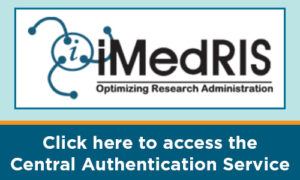What is an unanticipated problem?
Unanticipated problems involving risks to subjects or others (UAPs) refer to any incident, experience, outcome, or new information that:
- Is unexpected; and
- Is at least possibly related to participation in the research; and
- Indicates that subjects or others are at a greater risk of harm (including physical, psychological, economic, legal or social harm) than was previously known or recognized.
Any unanticipated problems must be reported to the HRPP according to the guidance in the When and how to I report? section of this page.
UAPs also encompass Unanticipated Adverse Device Effects, as defined below.
Definitions
What is an Adverse Event?
An adverse event (AE) is any untoward or unfavorable occurrence in a human subject, including any abnormal sign (for example, abnormal physical exam or laboratory finding), symptom, or disease, temporally associated with the subject’s participation in the research, whether or not considered related to the subject’s participation in the research. Adverse events encompass both physical and psychological harms. They occur most commonly in the context of biomedical research, although on occasion, they can occur in the context of social and behavioral research.
Some adverse events are also considered unanticipated problems and some are not. Adverse events that are also unanticipated problems must be reported to the HRPP.
For additional guidance on unanticipated problems, adverse events, and when to report them, visit this page from the Office of Human Research Protections or Contact us.
When and how do I report?
Investigators must report the following events or issues to the HRPP as soon as possible but within 7 working days after the investigator first learns of the event using the “Reportable New Information” form in iMedRIS. Failure to report the following events or issues within 7 working days will be considered noncompliance. If investigators are uncertain but believe that the event might represent an UAP, a report should be submitted.
Examples of UAPs include, but are not limited to:
- Actions taken without prior IRB review and approval to eliminate an apparent immediate hazard to a research subject(s);
- Sponsor or lead investigator/coordinating center-imposed suspension or termination of some or all research activities;
- An unanticipated event related to the research that exposes subjects to potential risk but that does not involve direct harm to subjects;
- A breach of confidentiality or loss of research data (e.g., a laptop or thumb drive is lost or stolen);
- Incarceration of a research subject;
- A subject complaint;
- An unanticipated event related to the research that results in actual harm or exposes individuals other than the research subjects (e.g., investigators, research assistants, students, the public, etc.) to potential risk;
- New information that indicates increased risk, new risk(s), or decrease to potential benefit from what was previously understood. Examples include:
- An interim analysis or safety monitoring report indicates that the frequency or magnitude of harms or benefits may be different than initially presented to the IRB;
- A report or publication that indicates the risks, benefits, or merit of the research are different from what was previously understood.
